Crushed glass brings texture, shine, and depth to resin art. Not many materials can match the sparkle and dimension it gives.
Want a sparkling geode design? Or maybe a glossy abstract piece? Crushed glass can turn plain resin into something pretty eye-catching.
You can use crushed glass to create layers, add dimension, and give your resin art a professional look.
Crushed glass works great for both decorative and useful projects. It can highlight edges, fill empty spaces, or add a sparkly accent to coasters, trays, and wall art.
The mix of shiny glass and smooth resin creates a modern finish that stands out but doesn’t feel over the top.
As you try out crushed glass in resin, you’ll figure out which types of glass work best and how to use them safely. Finding the right balance of texture and clarity is a bit of an art, honestly.
With some practice, you can make projects that catch the light and show off unique details every time.
Start your project with our fast-drying epoxy collection for quick, strong results.
What Is Crushed Glass And Why Use It In Resin Art?

Crushed glass gives resin art texture and sparkle. It lets you make pieces that reflect light in cool ways and gives your work a more layered look.
You can pick from different types and finishes of glass to match your style.
Types Of Crushed Glass For Resin
You’ll find crushed glass as glass chips, fine shards, or recycled glass pieces. Each type gives a different look and shine.
Fine glass is good for smooth finishes, while bigger chips make bold, shiny highlights. Crushed glass comes in clear, frosted, or colored options.
Clear glass gives a soft shimmer, and colored glass adds some pop. Iridescent glass even changes color in the light, which is pretty neat.
Some artists make their own crushed glass by carefully breaking old bottles or glass pebbles. It’s a cheap and eco-friendly way to get materials, but you have to be careful about sharp edges.
|
Type |
Appearance |
Best For |
|
Fine Crushed Glass |
Smooth, subtle sparkle |
Jewelry, coasters |
|
Medium Chips |
Noticeable shine, texture |
Wall art, trays |
|
Large Glass Pieces |
Bold, reflective |
Geode-style resin art |
Benefits Of Adding Crushed Glass To Resin Projects
Crushed glass gives your resin art texture, depth, and light reflection. The glass pieces catch and scatter light, making the surface look more detailed.
You can use crushed glass to make a 3D effect that pops in both big and small projects. Try embedding the glass in the resin or sprinkling it on top while the resin’s still wet for different looks.
It pairs nicely with pigments, metallic flakes, or mica powders. Mixing these helps you control shine and transparency.
Lots of crafters use crushed glass to mimic gemstones in resin geodes, add sparkle to coasters, or highlight parts of abstract art.
Safety Tips When Handling Crushed Glass
Crushed glass can be sharp, so always wear gloves and eye protection. Handle it gently to avoid cuts.
Rinse and dry the glass before adding it to resin. Clean glass sticks better and keeps your piece clear.
Work on a steady surface and keep small bits contained. Use a soft brush—not your fingers—to move the glass around.
If you’re making your own crushed glass, wear a mask to avoid breathing in dust. Crush glass inside a sturdy bag to keep fragments under control.
For more creative blending, check out our guide: Can You Mix Mica Powder With Acrylic Paint for Crafts?
Creative Applications Of Crushed Glass In Resin Art

Crushed glass brings texture, shine, and depth to epoxy resin projects. You can build up layers that catch light from different angles, making your resin art look more 3D and reflective.
The mix of glass and resin creates surfaces that feel smooth but have a bit of texture.
Geode-Inspired Resin Art
Mixing crushed glass with epoxy resin lets you mimic real geodes. The glass pieces act like tiny crystals, giving your art sparkle and shape.
Use clear or colored resin to hold the glass and create depth between layers. You can make rings, clusters, or veins with different glass sizes.
Big chunks work for the center, and fine glass adds shimmer to the edges.
Here’s a simple method:
- Pour a tinted resin base.
- Add crushed glass where you want crystal texture.
- Seal with a thin top coat to smooth out any sharp bits.
This works on canvas panels, trays, or wall art and gives each piece a gemstone look.
Ocean And Beach-Themed Resin Pieces
Crushed glass is perfect for ocean and beach resin art. It reflects light like wet sand or sea foam.
Use blue, green, or clear glass to look like waves and shallow water. Pour a base of blue resin, then sprinkle crushed glass along the “shore.”
Blend layers of resin and glass to make depth and movement. The glass texture helps show where sand meets water.
For extra realism, add shells, small stones, or white pigment for foam. Once cured, the surface turns glossy and smooth, while the glass underneath catches the light.
Jewelry And Wearable Art
Crushed glass works in small resin molds for jewelry too. Embed glass in pendants, earrings, or rings for a bit of sparkle.
Use fine glass for comfort and to avoid sharp edges. Combine clear resin with colored glass for a see-through effect, or add metallic flakes for more shine.
Try layering resin and glass in stages to control where the colors and glass end up. This makes your jewelry look polished but still unique.
The finished pieces are lightweight, strong, and honestly, pretty striking.
Stock up from our resin craft supplies collection to get all your essentials.
Techniques For Using Crushed Glass With Resin

You can mix crushed glass with resin to add texture, depth, and shine to your art. How you mix, layer, and arrange the glass really changes the final look, especially with silicone molds or surface designs.
Mixing Crushed Glass Into Resin
Get your resin and hardener ready by following the directions on the package. Mix them slowly to keep bubbles down.
Once blended, sprinkle in a little crushed glass. Stir gently so you don’t trap air and keep the glass spread out.
Here’s a quick guide for how much glass to use:
|
Resin Volume |
Crushed Glass Amount |
|
100 ml |
1–2 tablespoons |
|
200 ml |
2–4 tablespoons |
Pour the mix into your silicone mold or onto a flat surface. Tap the mold gently to bring bubbles up.
If you want a smoother finish, let the glass settle at the bottom. For more sparkle, stir again before pouring so the glass stays mixed in.
Don’t use sharp or uneven glass in thin layers, since it might poke through. Always wear gloves and safety glasses.
Layering Crushed Glass For Depth
Layering makes a 3D look that draws the eye. Start with a thin base of clear or colored resin.
When it’s a little tacky but not fully set, sprinkle crushed glass on top. This helps the glass stick.
Pour another thin resin layer to cover the glass. Repeat if you want more layers. Each one should cure enough to hold the next.
To get more depth, use different glass sizes—fine for shimmer, big for bold highlights. You can also tint each resin layer to get color changes and contrast.
Arranging Patterns And Designs
You can arrange crushed glass before pouring resin or after a thin base layer. Use tweezers or a stick to make patterns, lines, or clusters.
If you want even spacing, sketch a light outline first. In silicone molds, put the glass face-down so it shows through the cured resin.
Try mixing glass with mica powder, metal flakes, or colored resin for more detail. Start simple—too much glass can make the surface bumpy.
Once you’ve got the hang of it, experiment with gradients, borders, or center highlights to make your resin art pop.
And if you love sparkle, explore more about glitter. Read: Is Glitter Toxic? What You Need to Know Before Crafting before your next project.
Finishing Touches And Care For Crushed Glass Resin Creations

Good finishing and care help your crushed glass resin art keep its smooth feel, bright shine, and strength. Little things like sealing, polishing, and cleaning really matter for how your piece looks and lasts.
Sealing And Polishing Techniques
Once your resin cures, sealing and polishing really show off the clarity and depth of the crushed glass. Start by sanding the surface with fine-grit sandpaper to smooth out any uneven spots.
Go slow so you don’t scratch the resin. Use a microfiber cloth and a resin-safe polish to buff the surface until it feels smooth and glossy.
A little polishing compound helps even out dull spots. If you want a super shiny finish, brush on a thin layer of clear resin as a topcoat.
For art with textured glass, try not to over-sand. Just lightly polish the resin areas and leave the glass edges sharp and crisp.
Always wear gloves and eye protection when sanding or buffing. Sharp glass bits can be nasty if you’re not careful.
|
Step |
Tool |
Purpose |
|
1 |
Fine-grit sandpaper |
Smooth rough spots |
|
2 |
Polishing compound |
Restore shine |
|
3 |
Clear resin coat |
Seal and protect surface |
Maintaining The Sparkle And Durability
To keep your resin art looking fresh, clean it gently with a soft cloth and mild soap. Don’t use harsh cleaners or rough pads—they can scratch or dull the shine.
Keep your piece out of direct sunlight as much as you can. UV rays might cause yellowing or fading after a while.
If dust builds up in textured spots, grab a soft brush or a little compressed air to get it out. Try to hold your art by the edges so you don’t leave fingerprints on the polished parts.
For wall art or tabletops, stick some small felt pads or clear bumpers underneath. They protect both your piece and whatever it’s sitting on, which helps it stay sparkly for a long time.
Speed up curing with our fast curing resin machine collection.
Wrap Up
Crushed glass isn’t just for recycling—it’s for art! You can mix it into resin for sparkle, use it in vases, or decorate trays and coasters. It adds shimmer and texture to any project. Try using different colors for a mosaic effect or combine it with pigments for a galaxy look.
Add sparkle to your crafts with crushed glass! Mix it with clear epoxy resin and use silicone molds to make dazzling, one-of-a-kind art pieces.
Read our article: How to Get a Matte Resin Finish Easily to add texture to your glass art.
Frequently Asked Questions
Crushed glass brings sparkle, color, and texture to resin art. You can shape it into jewelry, coasters, or wall art—just keep clarity, safety, and curing time in mind for the best results.
What creative projects can I incorporate crushed glass into with resin?
Try crushed glass in resin jewelry, trays, coasters, wall panels, or decorative molds. It’s also great for geode-style art and mixed media. Layer different glass sizes or colors to add depth and play with the way light hits it.
How do I safely handle and mix crushed glass with resin for my artwork?
Wear gloves, a mask, and safety glasses to protect your skin and eyes. Crushed glass edges are sharp.
Mix the glass into resin slowly with a silicone or wooden stir stick. That way, you avoid splashes and keep the texture even.
Can you suggest any tips for achieving the best clarity when embedding crushed glass in resin?
Pick a clear, high-quality epoxy resin made for art. Keep your workspace dust-free and don’t overmix, or you’ll trap air.
Pour resin in thin layers and let each one settle before adding more glass or resin on top.
What's the secret to preventing air bubbles when using crushed glass in resin crafts?
Warm the resin a bit before mixing to thin it out. Stir gently and pour slowly to keep bubbles away.
You can use a heat gun or torch to pop surface bubbles right after pouring. It takes a little practice, but it works.
Are there specific types of resin that work best with crushed glass for jewelry making?
Go for resins labeled for jewelry or casting. These cure clear, resist yellowing, and have a thinner consistency.
That helps the glass settle evenly and keeps bubbles from getting trapped.
How long should I cure my resin piece with crushed glass inclusions to ensure it sets properly?
Most resin pieces need about 24 to 72 hours to cure. The exact time really depends on the brand you use and how warm or cool your room is.
Try not to move your piece while it cures. Always check the manufacturer’s directions for the best results and a clear, solid finish.

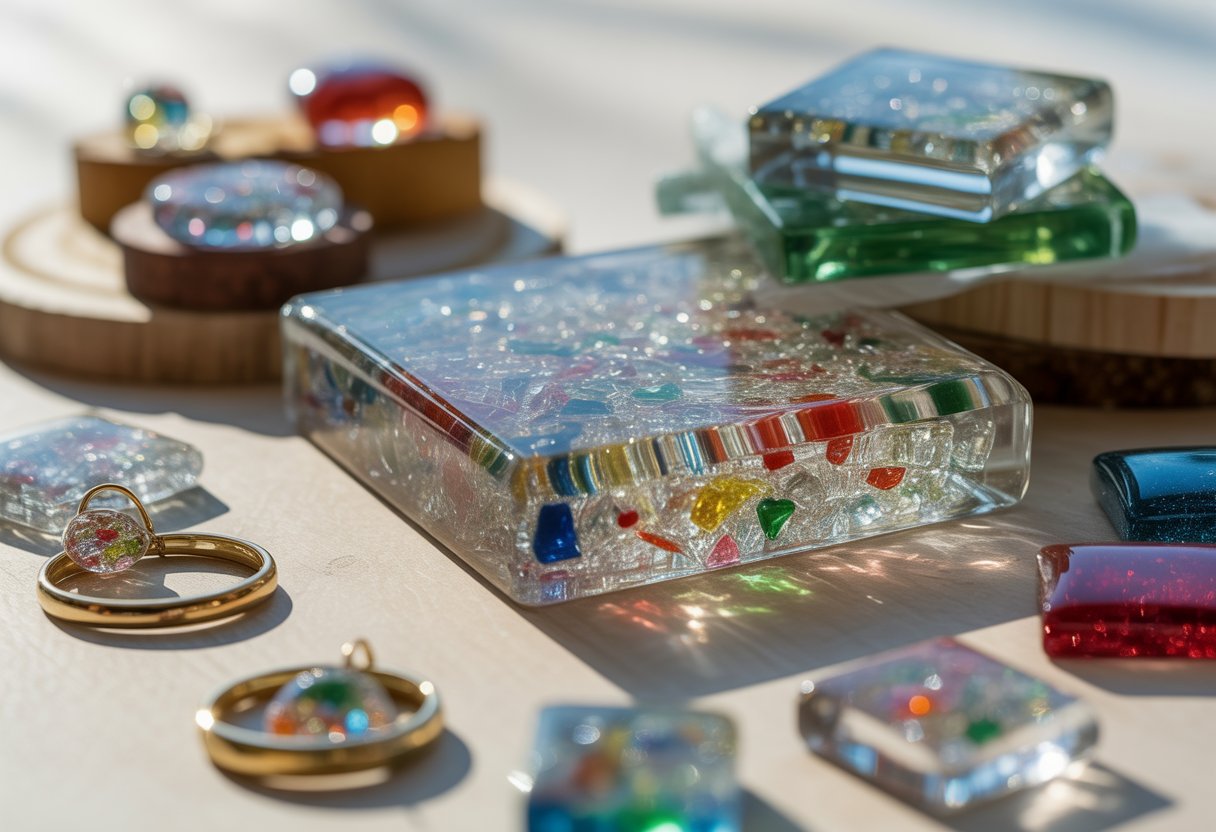
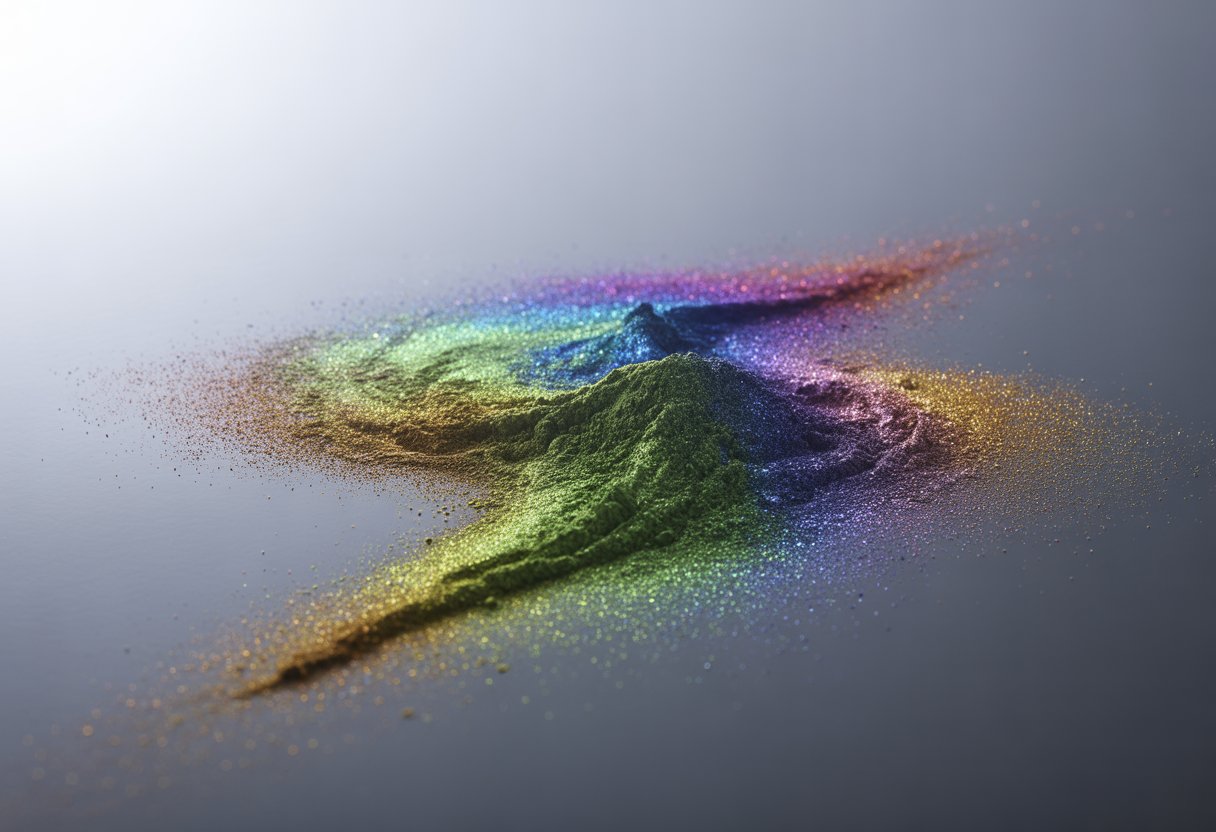

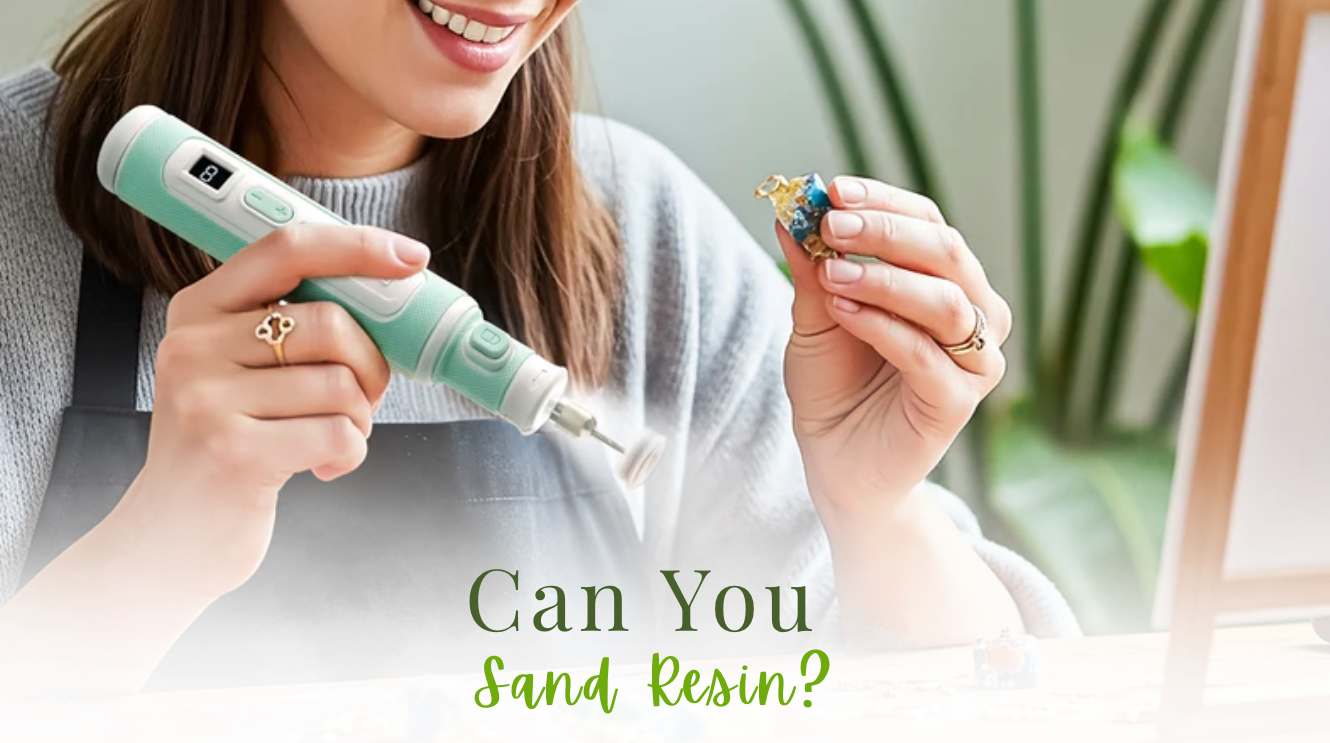
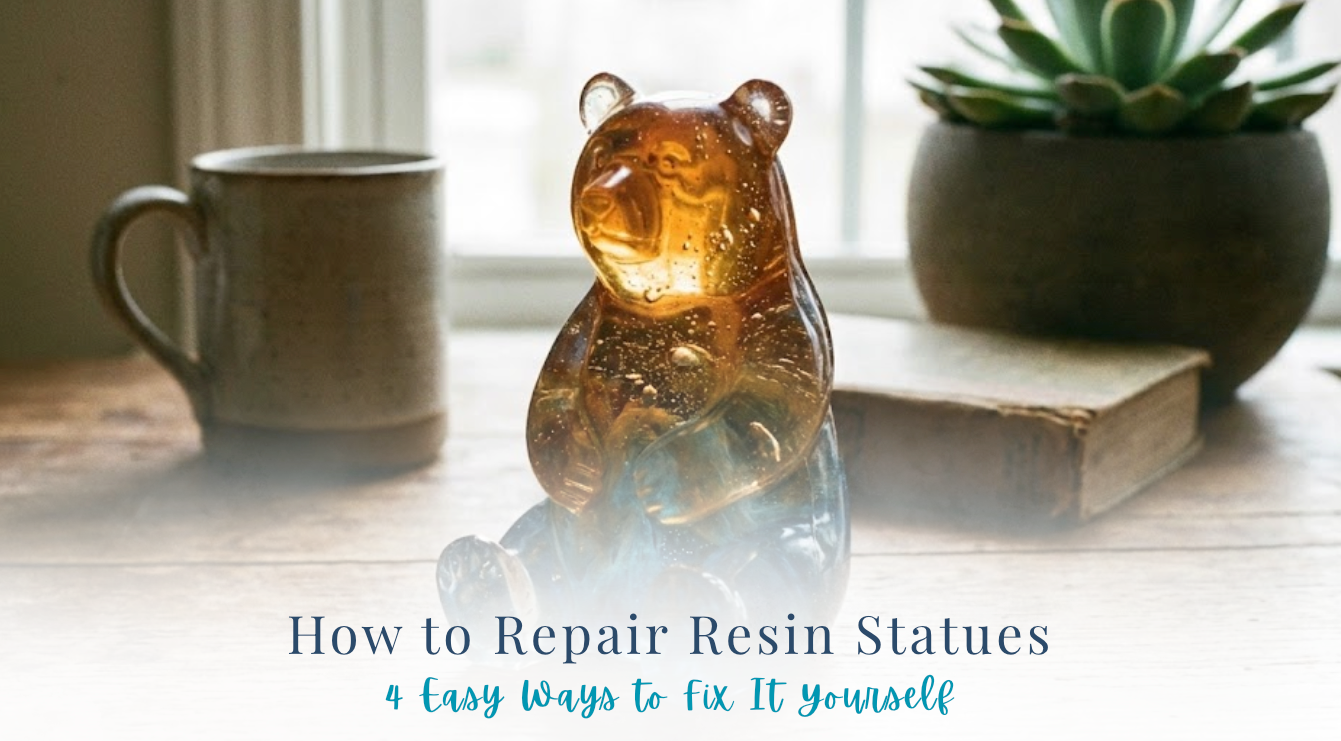
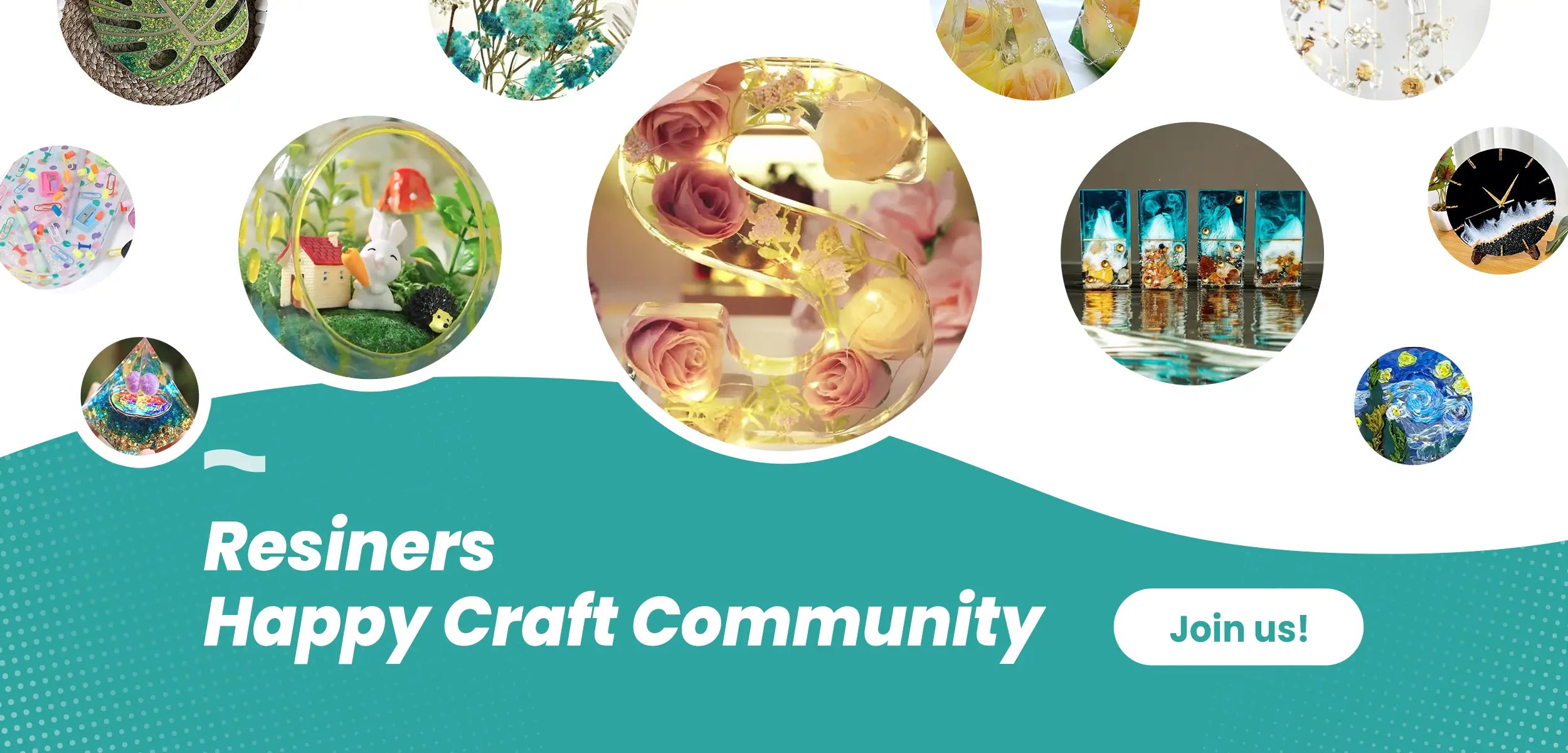
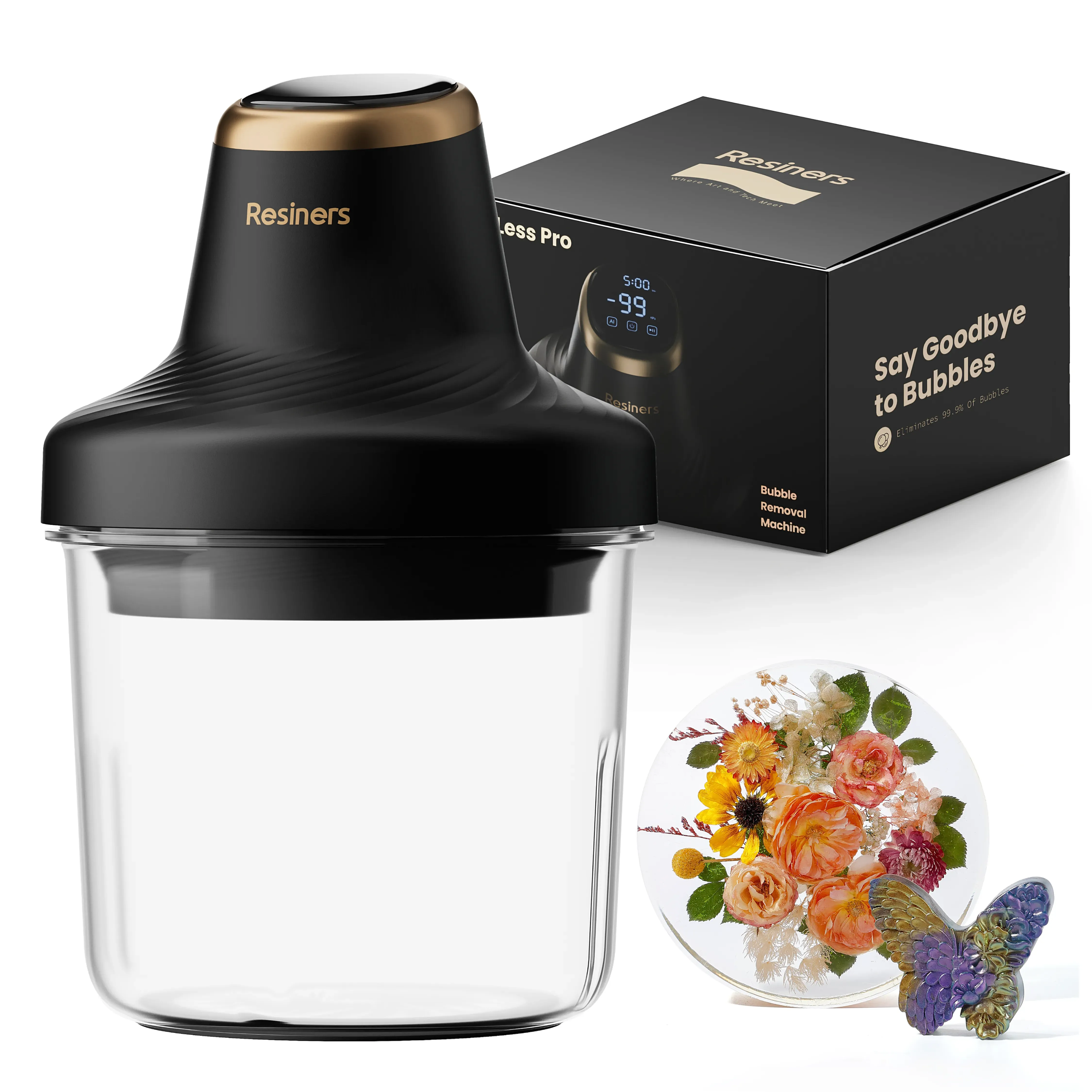


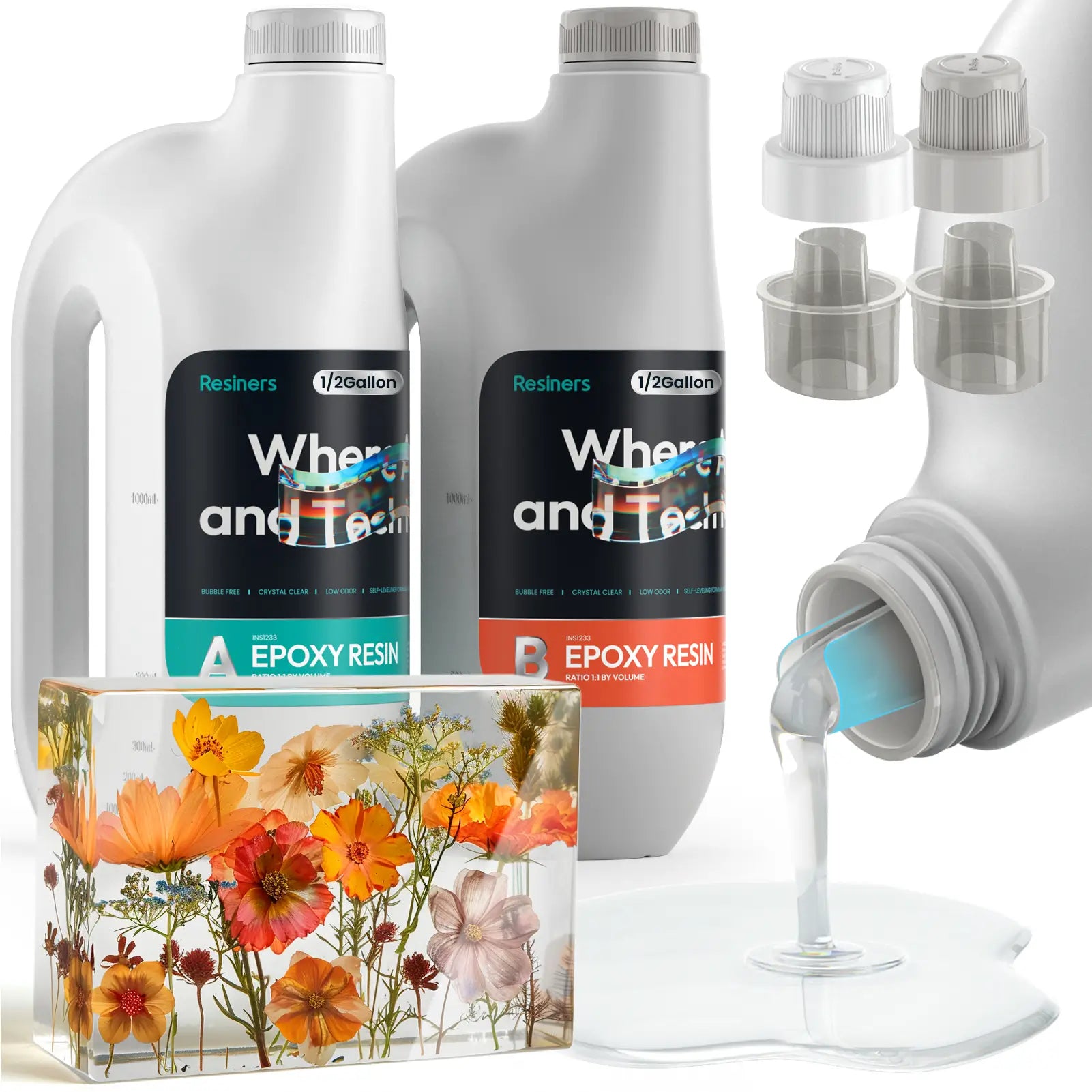
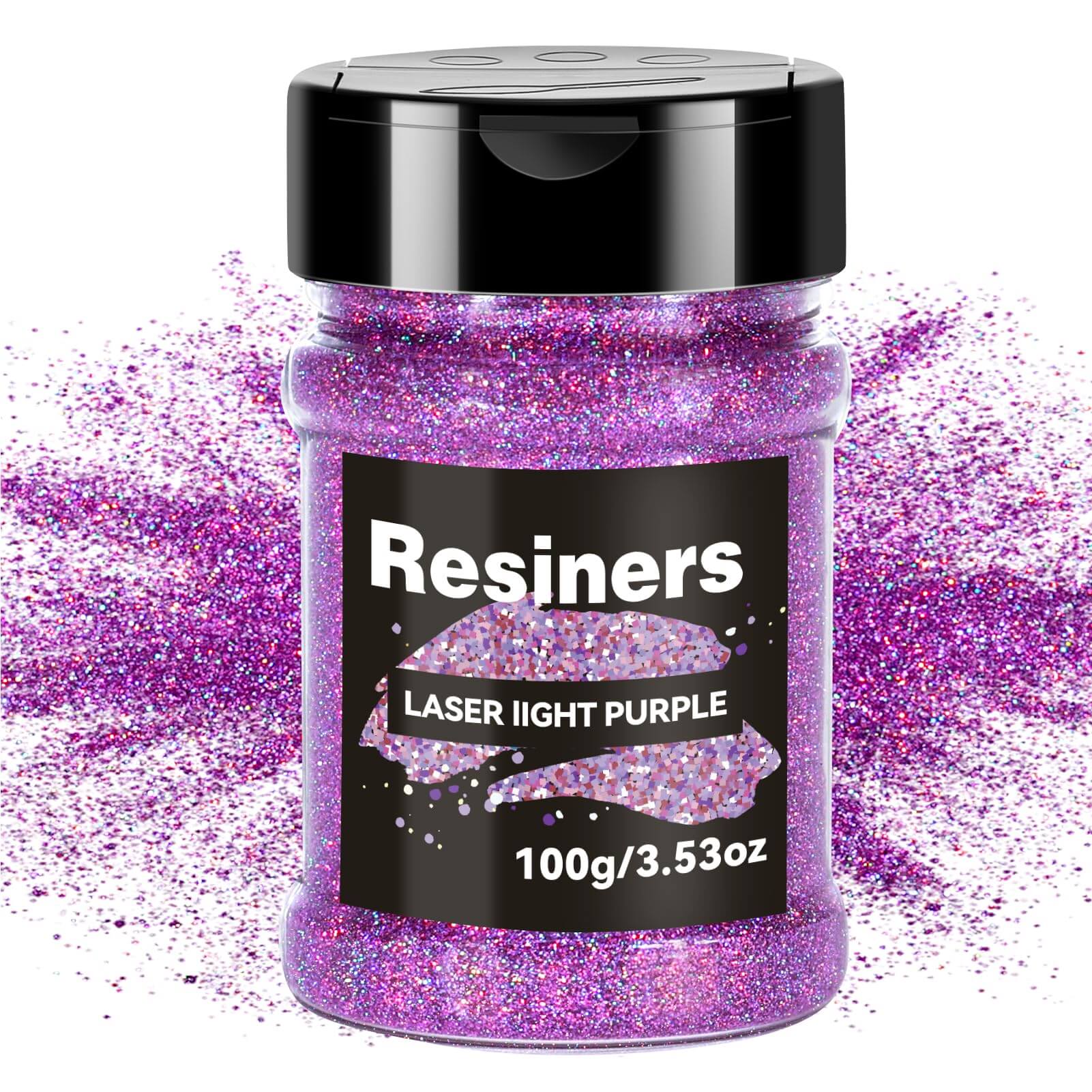
اترك تعليقًا
This site is protected by hCaptcha and the hCaptcha Privacy Policy and Terms of Service apply.